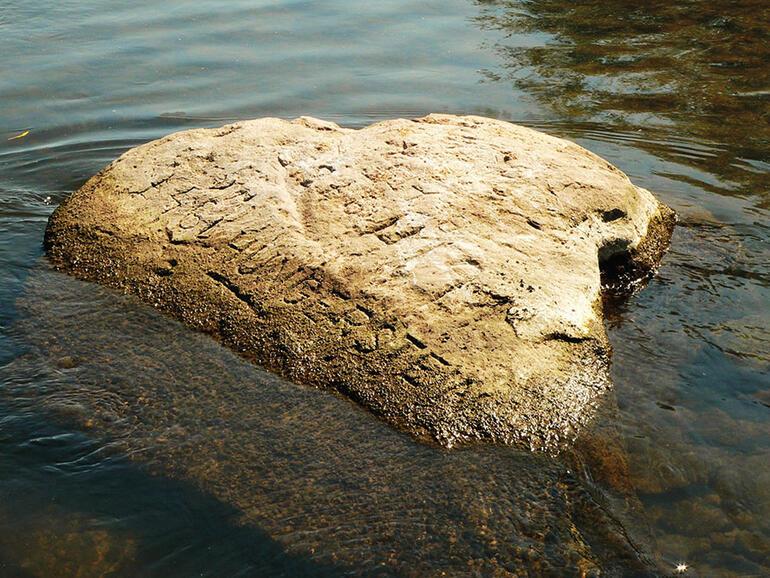Considered one of the biggest threats today. drought Due to the crisis, the level of many lakes and streams in Europe has reached the lowest level in recent years. Used to commemorate historic droughts in lakes and rivers.hunger stonesCarved rocks known as ‘ appeared. Starting from the Czech Republic Germanyone of the largest rivers in Central Europe, passing through the ElbeEngraved on a stone in 1616, it says “Cry if you can see me”. The hunger stones were last seen in 2018.
It is known that the hunger stones in Decin City, Czech Republic, were carved during the periods when the river waters receded. The stones are engraved with the dates 1417, 1616, 1707, 1746, 1790, 1800, 1811, 1830, 1842, 1868, 1892, 1893, 1921, 1947 and 1959. However, the German phrase “Wenn du mich siehst, dann weine” meaning “cry if you see me”, which is thought to have been written on a stone in 1616, makes these stones world famous.

DROUGHT WARNING FOR
class=”medianet-inline-adv”>
Czech researchers who studied the stones in 2013 agreed that the inscriptions were engraved to warn of drought. The hunger stones, last seen in 2018, have resurfaced this year due to the drought crisis. Moreover, it was determined that the water level was below 2018. When the hunger stones in the Elbe River were seen, the eyes of the world turned to the Czech Republic. The stones, which were news in the world press, were also on the agenda of social media.
THE WORST OF THE LAST 500 YEARS
Senior researcher Andrea Toreti of the European Commission’s Joint Research Center (EC-JRC) warned at a briefing last week that the current drought could be the worst in 500 years. Severe drought will worsen in Europe, potentially reaching 47 percent of the continent, according to the centre’s forecasts. “We didn’t fully analyze the event (this year’s drought) because it’s still going on, but based on my experience I think it’s perhaps more extreme than 2018,” Andrea Toreti said at the meeting. “Just to give you an idea, the 2018 drought was so extreme that when we look back at least the last 500 years, there was no other event like the 2018 drought, but I really think this year was worse than 2018.”
.
